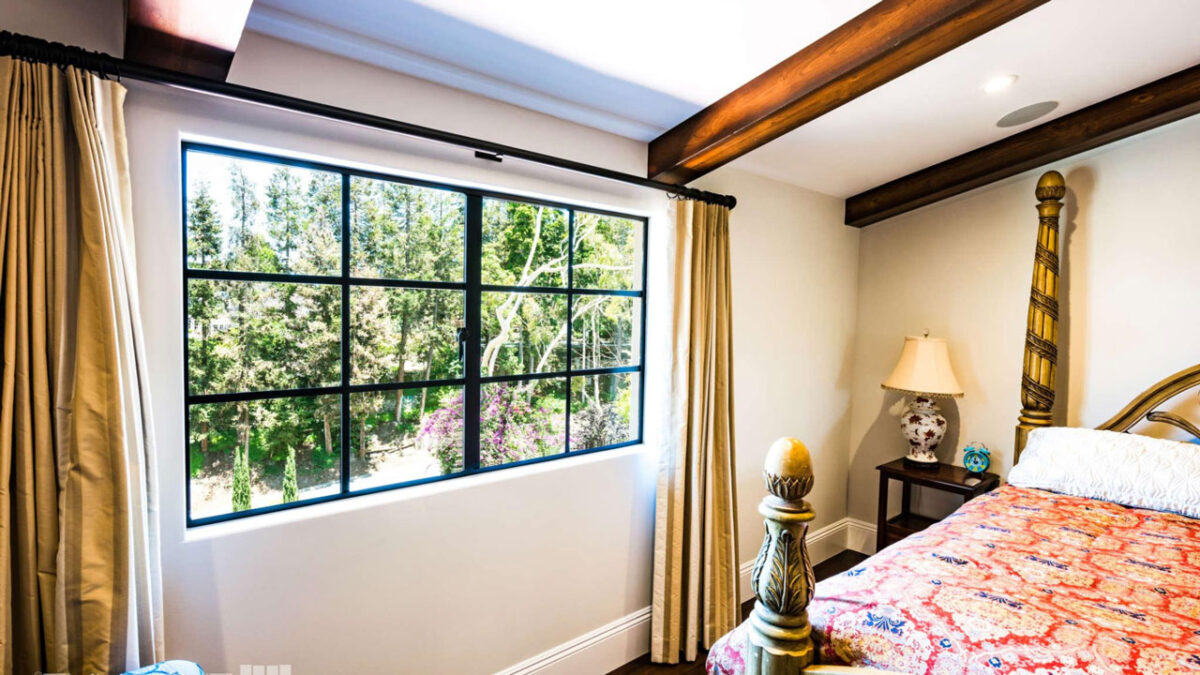Curtain wall systems have revolutionized the aesthetics and functionality of commercial buildings. Serving as the building’s outer wall, these non-structural elements, known for creating stunning picture walls, play a crucial role in defining the external walls and improving the building’s thermal performance.
This guide delves into the diverse materials used in picture windows and curtain wall design, from glass panels to metal plates, and how they contribute to energy efficiency, structural integrity, and visual appeal.
Curtain Wall Materials
Curtain wall systems comprise various materials, each selected for its unique properties and contribution to the overall performance and appearance of the system. Understanding the roles and benefits of different materials is essential for building owners and architects when planning construction projects.
- Glass Panels: The heart of any curtain wall system is its glass panel. Options range from standard fills of glass to advanced coated glass, designed to improve energy saving and reduce energy consumption. Glazed panels, including spandrel and insulated glass units, offer enhanced thermal insulation, contributing to the building’s adherence to energy efficiency standards.
- Metal Panels and Mullions: Metal elements such as vertical mullions, horizontal mullions, and metal plates provide structural support to the curtain wall, bearing lateral loads, gravity loads, and structural loads while contributing to the system’s wind load resistance. Aluminum mullions are favored for their lightweight, corrosion resistance, and versatility, while steel mullions are selected for their strength and durability.
- Opaque Panels and Spandrel Panels: For areas requiring privacy or where insulation is crucial, opaque panels and spandrel panels are integrated into curtain wall systems. These elements conceal structural frame components and floor slabs, enhancing the aesthetic and thermal performance of the exterior walls.
Thermal Insulation and Performance
Thermal insulation is a critical aspect of curtain wall materials, affecting the building’s overall energy efficiency. Innovations such as insulated glass units and thermal breaks in metal frames prevent heat transfer, maintaining comfortable internal temperatures and reducing the overall energy consumption of the building.
Types of Curtain Wall Systems and Their Materials
The design and functionality of curtain wall systems have evolved significantly over the years, leading to the development of various types that cater to different building needs and aesthetic preferences. Here’s a detailed look at the two primary types of curtain wall systems — Stick Systems and Unitized Systems — and the materials commonly used in each.
1. Stick Systems
Stick systems, often referred to as traditional curtain wall systems, involve assembling the curtain wall frame (mullions and transoms) and glazing directly on-site. The construction process is sequential, starting from the building’s structure, typically attaching vertical mullions to the floor slabs or structural frame, followed by fitting horizontal mullions, and finally, installing the glass panels or infill materials.
- Aluminum Frames: The most commonly used material due to its strength, lightweight nature, and flexibility in design. Aluminum mullions support the glass panels and transfer both gravity loads and lateral loads back to the building structure.
- Glass Panels: Varying from clear, tinted, coated, or laminated glass, they are central to providing natural light and enhancing the exterior aesthetics. The glass can be single, double, or triple-glazed, with choices like low-E coatings or insulated units to improve thermal performance.
- Spandrel Panels: These are opaque panels used to cover areas between floors, often made of metal or insulated materials, which can match or contrast the vision glass aesthetically.
- Thermal Breaks: Integrated within aluminum frames to reduce heat transfer and improve energy efficiency.
- Sealants and Gaskets: Used to seal joints and prevent water leakage, contributing to the system’s overall weather resistance.
2. Unitized Systems
Unitized curtain wall systems consist of large panels that are pre-assembled and glazed in a factory setting before being shipped to the construction site. This method is characterized by its speed and efficiency, as entire sections of the wall can be installed in a single operation, significantly reducing construction time.
- Prefabricated Units: These modules typically comprise a metal frame that holds the glass units. The entire assembly is constructed under controlled factory conditions, ensuring higher precision and quality.
- Insulated Glass Units (IGUs): These are essential for unitized systems, providing excellent thermal insulation. IGUs are double or triple pane glass separated by a vacuum or gas-filled space to reduce heat transfer.
- Aluminum or Steel Frames: Prefabricated units are often framed with aluminum or steel, providing structural integrity and resistance to environmental stressors.
- Gaskets and Sealants: Since unitized systems are pre-sealed in the factory, they often offer superior resistance to air and water infiltration compared to stick-built systems.
- Operable Windows: Some unitized panels include operable windows or vents, enhancing natural ventilation and occupant comfort without compromising the façade’s uniform appearance.
Comparing Materials and Applications
While both systems use similar materials, the key difference lies in their assembly and installation methods. Stick systems offer more flexibility in design and can be more easily adjusted to fit irregular spaces or accommodate last-minute changes.
However, they require skilled labor and are subject to weather delays. Unitized systems, on the other hand, provide quicker installation and better quality control, making them an ideal choice for high-rise buildings and large-scale projects where uniformity and rapid closure of the exterior envelope are priorities.
Count on Euroline Steel Windows For The Best Material
The choice of materials for curtain wall systems significantly impacts the energy efficiency, structural integrity, and aesthetic appeal of commercial buildings. By selecting the appropriate glass, metal, and insulation materials, building owners can ensure that their curtain walls enhance the building envelope, reduce energy costs, and contribute to a sustainable and visually appealing exterior.
Complement your curtain wall system with the elegance and durability of Euroline Steel Windows. Enhance your commercial building’s energy efficiency and aesthetic with our top-quality windows. Contact Euroline Steel Windows today for a consultation and elevate your construction project’s design and performance.


